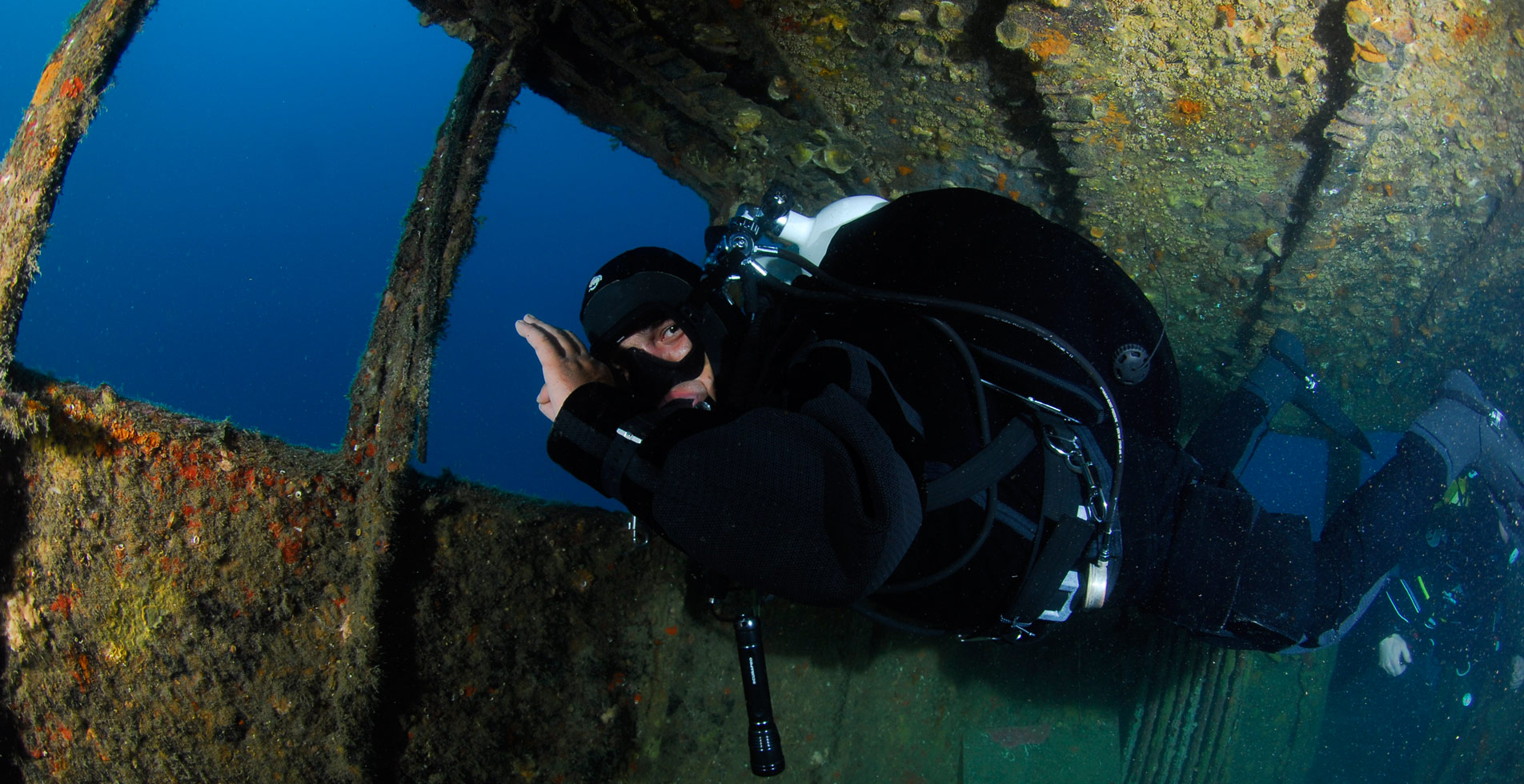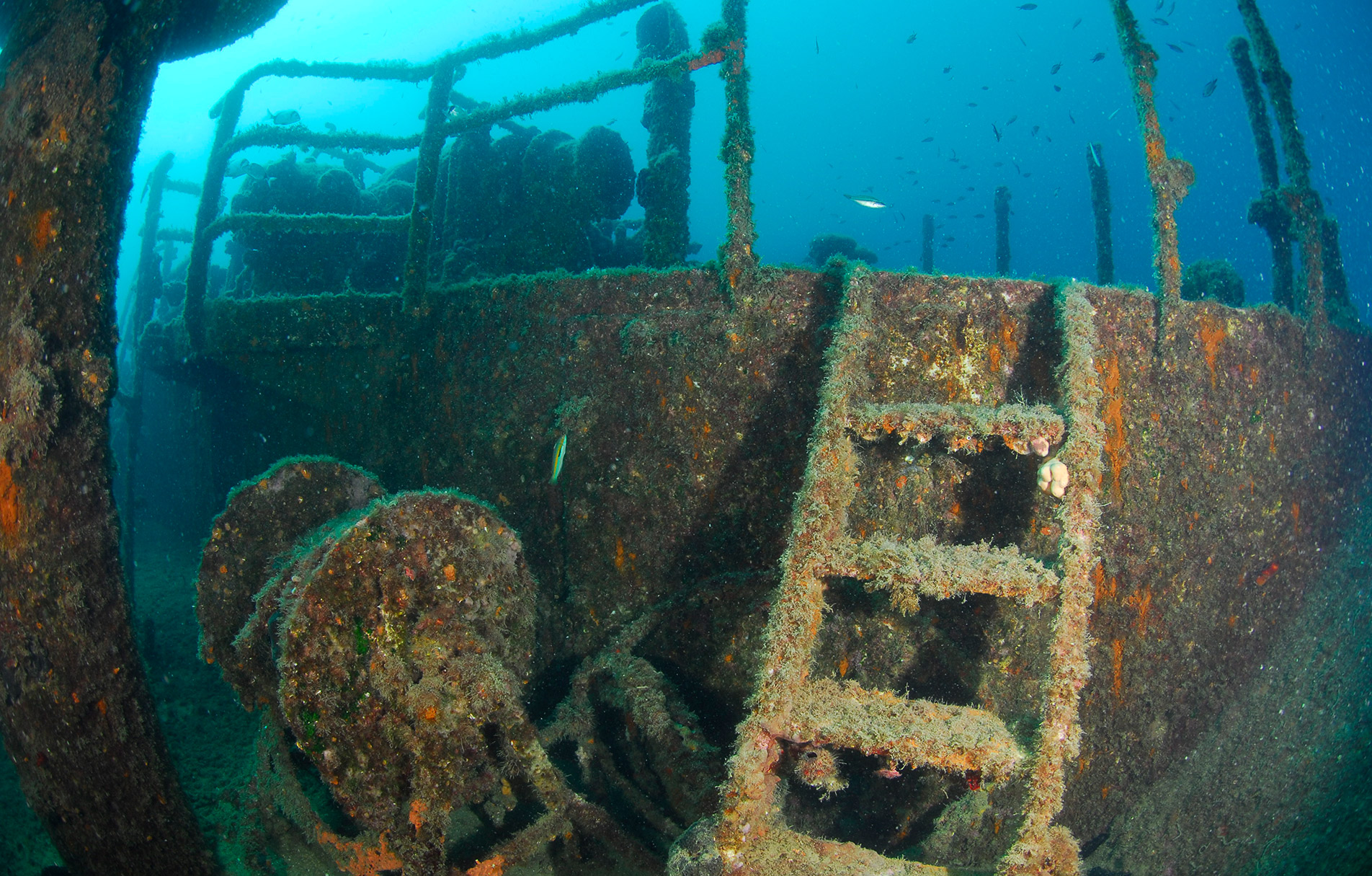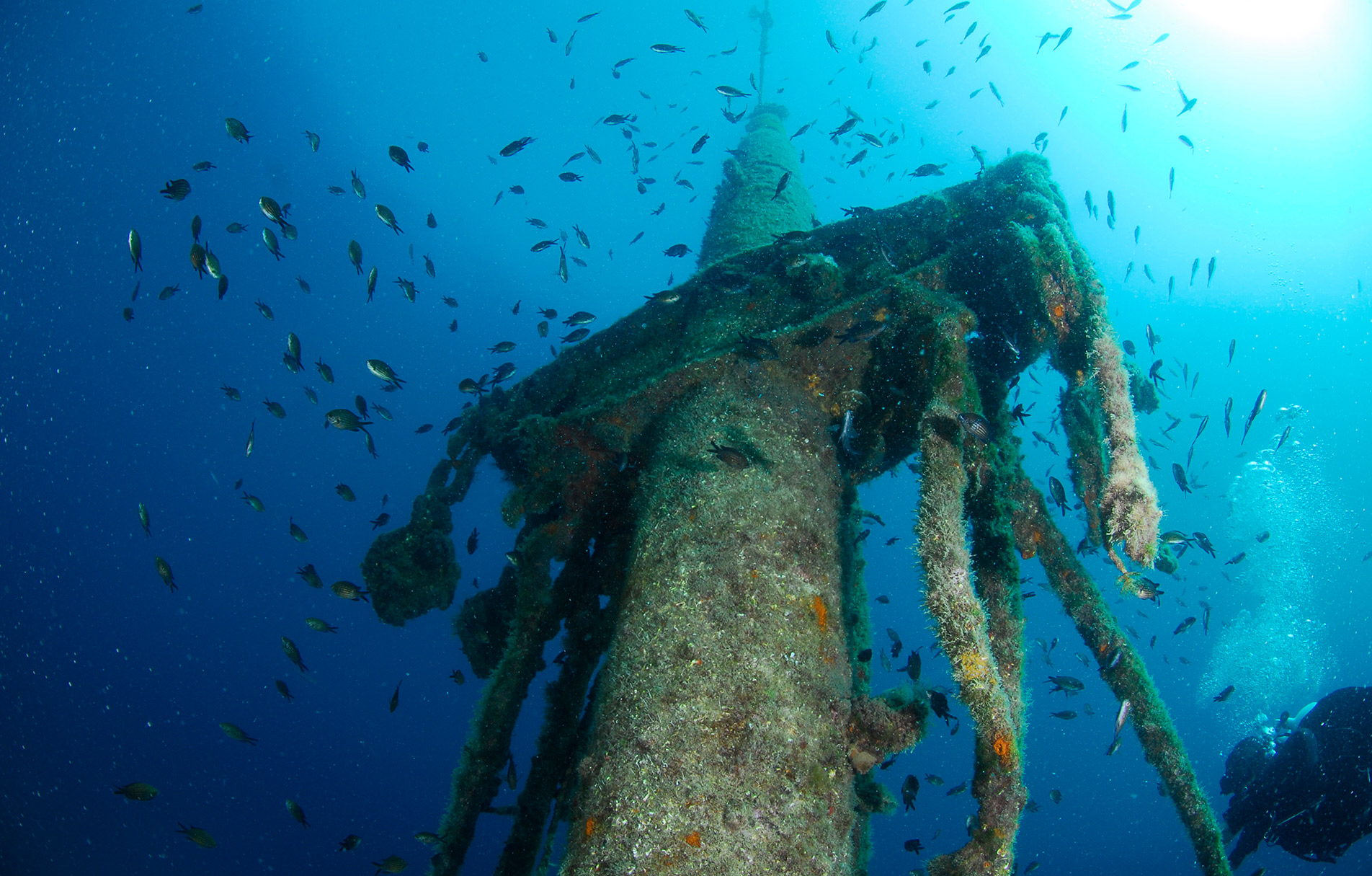Except for its rich material heritage, the island of Krk is famous for some unique elements of its scenery painted in two colours specific to the region – green and blue. The blue asset of the island of Krk, the sea, has been closely connected with the life on the island since ancient times. While the sea has often given itself selflessly to the man, the man has usually taken away from it. However, we should not forget that the man has also often given the most valuable things in his possession to the sea, including his own life. So, in addition to exploring and enjoying the “green” part of our region, take a glimpse at, explore and experience the deepest shade of blue – the underwater world. You can learn basic diving skills or improve the existing ones in two diving centres in Šilo.
The Modrulj diving centre offers organisation of diving courses, excursions, equipment for rent, special weekend promotions (in the low season) and a special attraction – a night diving on a shipwreck. It also organises accommodation for all its clients.
The Neptun diving centre is fully equipped for organizing diving excursions and courses, as well as for carrying out trainings for all types of technical diving. It also offers accommodation and the divers are transported to the most attractive locations by fast, modern boats.
Among a number of locations attractive to both professional divers and the recreational ones, one stands out in particular, the one that best illustrates the saying “the sea gives, the sea takes”.
Neptun Diving Centre
Lokvišća 12d, 51515 Šilo
Tel.: +385 (0)51 604-404
Fax: +385 (0)51 604-403
E-mail: info@neptun-silo.com
Web: www.neptun-silo.com
Modrulj Diving Centre
Pećine 27, 51515 Šilo
Tel.: +385 (0)98 1881 625
E-mail: modrulj@modrulj.hr



